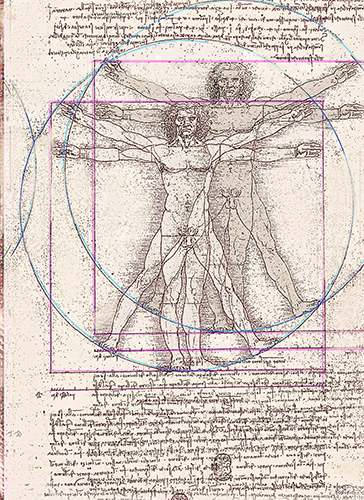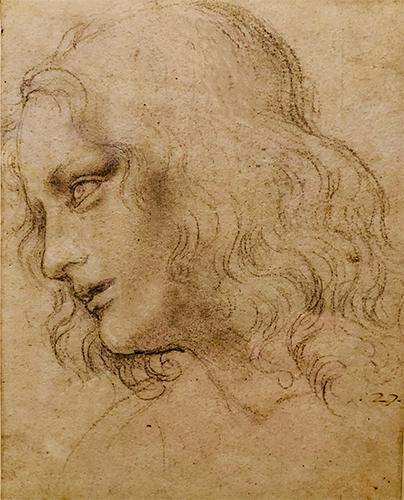Leonardo Drawings, The Royal Collection
September 11, 2019Leonardo drawings from the British royal collection went on display this year at Buckingham Palace. Because Leonardo died 500 years ago. So while in London, we visited the art exhibition. I wanted to see the drawings collection for many reasons.
But my main one was that Leonardo drawings absorbed me throughout writing of “The Best of Crimes.” And Leonardo’s “Vitruvian Man” fascinated my narrator. Walter Mitchell saw truth in Leonardo’s brilliant observations. Such as, we derive knowledge only through nature.
Until publication, I called the novel “The Vitruvian Man” And the (still in-progress) progress sequel, “The Vitruvian Woman.” And, if you don’t know the “Vitruvian Man,” my amateurish doubling of a facsimile may remind you. A naked man stands on a circle within a square. And, the drawing’s proportion implies motion. For the man is superimposed upon himself. Standing straight, his arms reach from his shoulders. And a second pair of legs spreads along the circle’s arc. The second pair of arms aligns with the man’s head.
Leonardo Drawings Suggest Motion
Of course, the Vitruvian Man was not among the show at Buckingham Palace. Something I knew beforehand. It resides in Venice. Carefully preserved and rarely shown.
Yet the royal collection of Leonardo Drawings were nonetheless were magnificent. Even the small studies on faded paper.
This study of St. Philip’s head especially intrigued me. Because, although beautiful, the expression conveys an awful bewilderment.
Leonardo drawings at Buckingham Palace included aerial maps, botanicals, and deluges. And even the small, hasty sketches were amazing. Also, every Leonardo drawing suggested motion.
Leonardo’s Status as an Outsider
Unlike Michelangelo, for example, Leonardo was proud to be homosexual. He liked being left-handed and dressed to show off his long, curly red hair. Being bastard allowed him to pursue his own interests. Otherwise, social expectations would require him to join the family business. He often struggled for money. But his status did not limit him.
His biographer, Walter Isaacson, noted that Leonardo could scarcely do long division–and yet he intuited calculus via geometry. Examples appear in his studies of optics and perspective.
Leonardo’s work was transcendent both in art and science. And scholars are still catching up with his discoveries. He valued truth and honor. Both of which sprang from his intense observation of nature matched by his imagination.
The Shock of Betrayal
After we returned home, I read an article about “The Last Supper,” by Makoto Fujimura. The art critic noted that Jesus is speaking in the mural. And he’s telling his disciples: One of you will betray me. Betrayal, Fujimura wrote, was not then the everyday interaction it is now. Rather, in Leonardo’s time, betrayal meant a roiling outrage. And, St. Philip’s expression reveals shock and fear.
Most importantly, St. Philip’s contorted body breaks the horizontal plane in “The Last Supper.” Further revealing the saint’s terror. For Philip belonged to Jesus’s inner circle. Most likely they grew up together. In the painting, one sees horror beginning with Philip. And undulate across the table, ending with Judas.

